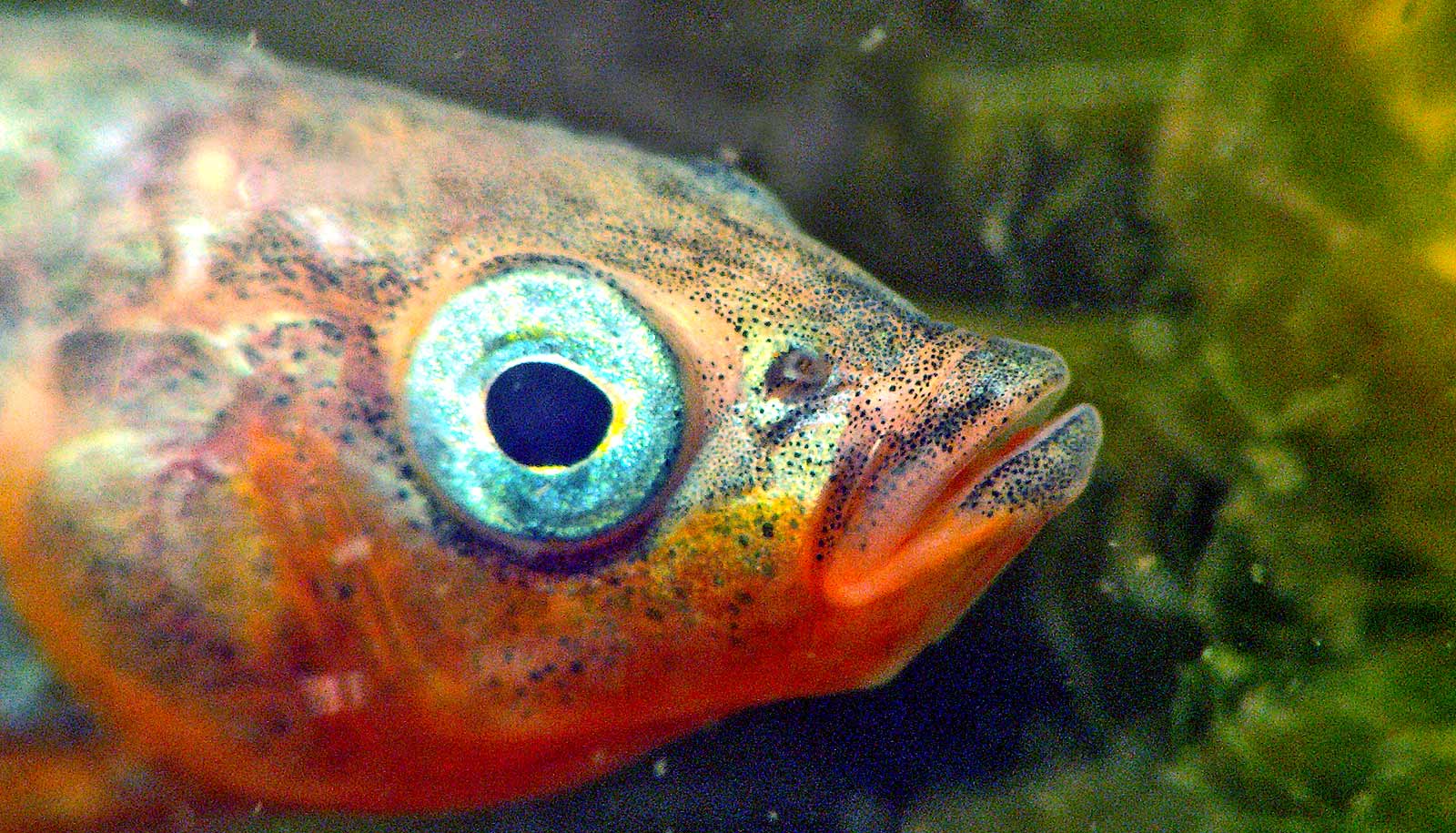Male three-spine spickleback. (Credit: Piet Spaans via Wikipedia) Show New research clarifies the genomic changes that drove the rapid evolution of three-spine stickleback fish. The three-spine stickleback fish evolved independently from its marine ancestors in thousands of freshwater lakes across the northern hemisphere, a process called parallel evolution. This process appears to occur within decades, providing scientists a unique opportunity to actually observe vertebrate adaptation in nature. Findings from the new study in Science Advances may shed light on which genetic changes might underlie the process of natural selection in other species. Researchers placed marine sticklebacks into new lakes in Alaska and essentially watched them adapt to their new freshwater habitat over a number of years. They then performed whole genome sequencing of these fish as they evolved into freshwater forms. They found hundreds of underlying genomic changes that form the basis of their rapid adaptation. “We illustrated that the genomic features that were identified as important for rapid stickleback evolution can actually be used to predict the genomic location of where natural selection occurred in other species across the tree of life, such as Darwin’s finches,” says Krishna Veeramah, an associate professor in the department of ecology and evolution at Stony Brook University. “This shows that the genomic mechanisms that govern evolution of freshwater stickleback underlie adaptation in species more generally.” While the predictability of evolution is not an exact science, the authors believe their understanding of sticklebacks in fresh water provide important insights into the genomics behind vertebrate evolution and provides insight into how evolution might proceed species-wide in the future. Veeramah’s work had funding from the National Institutes of Health. Several National Science Foundation grants also supported the research. Source: Stony Brook University The Virtual Evolution Stickleback LabFinal QuizBy: Angel Henn1. How did some ancestral sea-run stickleback populations come to live exclusively infreshwater?a. These populations swam to freshwater lakes to spawn and then never returned to theocean because there were fewer predators in lakes.b. They became trapped in lakes that formed at the end of the last ice age.c. They don't actually live exclusively in freshwater; they only live in fresh water at certainstages in their lives.d. They developed traits that made them better adapted to freshwater and, as a result,had to move to a freshwater environment to survive. 2. What happened to these fish as they adapted to living exclusively in freshwater? Get answer to your question and much more 3. Is the following statement true or false? As they adapted to life in fresh water, allstickleback populations living in lakes in Alaska underwent exactly the sameevolutionary changes. Get answer to your question and much more 4. Which of the following is an explanation for why the stickleback is a model organismfor studying evolution? Get answer to your question and much more 1/31/2021Stickleback Evolution Virtual Lab | HHMI's BioInteractive4. Which of the following is an explanation for why the stickleback is a model organism for studyingevolution? Get answer to your question and much more 5. Why do some stickleback populations lack pelvic spines? Get answer to your question and much more 6. In this virtual lab, why did you compare pelvic structures of stickleback populations from two differentlakes?A. To have a larger number of specimens to score, increasing the accuracy of results.B.To compare the trait in stickleback populations living in two potentially different environments.C. Frog Lake and Bear Paw Lake are two lakes with very similar stickleback populations.D. One lake represents the control population and the other population is the one we can compare to thecontrol.Correct!Your answer: B. How did stickleback populations come to live exclusively in fresh water?Freshwater stickleback populations were established when some sea-run populations became trapped in lakes that formed at the end of the last ice age. These lakes were initially connected to the ocean, but were cut off as ice fields retreated.
What event led to stickleback fish living in freshwater lakes?These small fish typically live in the ocean but breed in coastal streams. After the last ice age ended some 11,000 years ago, populations of sticklebacks rapidly colonized newly formed freshwater streams and lakes - through a process known as adaptive radiation.
What is the difference between marine seaMarine stickleback populations live and breed strictly in the ocean. Sea-run stickleback fish are anadromous, meaning that they are born in fresh water, spend most of their lives in the ocean, and return to fresh water to breed. Freshwater stickleback fish live entirely in fresh water.
What are the reasons that low armor would be selectively advantageous in freshwater environments?One of the main hypotheses to explain the advantage of the low-armor Eda allele in fresh water is that lateral plates are costly in energy and materials to produce, especially in fresh water (23, 24).
|

zusammenhängende Posts
Werbung
NEUESTEN NACHRICHTEN
Werbung
Populer
Werbung

Urheberrechte © © 2024 defrojeostern Inc.














